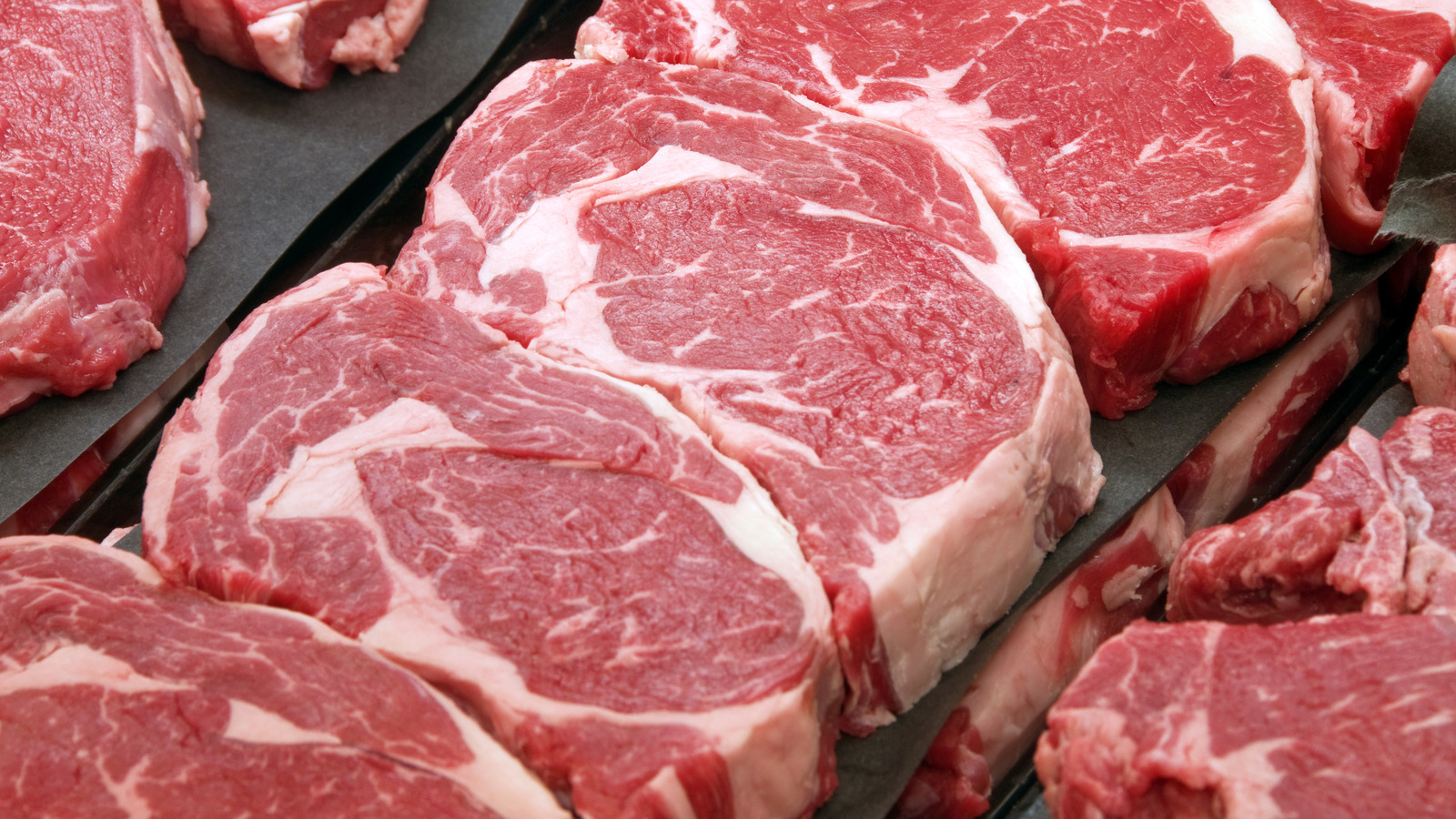
A Change In Color Doesn’t Necessarily Mean Your Meat Has Gone Bad – The Daily Meal
Americans are big fans of meat, with the average American consuming around 225 pounds of meat per year. But, we also have a problem with food waste, and throwing out spoiled meat is a big part of that, as roughly 26% of all meat gets thrown out each year. It makes sense; meat that’s gone bad can make you really sick, with bacteria being the cause of spoilage in the first place (not to mention the reason you need to cook your meat to temperature). And, one of the ways you can tell if food has gone bad is if it changes color.
But that’s the thing: Knowing whether your meat is bad isn’t actually as simple as asking “did it change color at all?” A lot of the time, meat that’s changed color is actually perfectly safe to eat, as the change in color has more to do with what it’s exposed to than spoilage. And, there are far better ways to determine whether meat is no longer safe for consumption than color change.
Beef and chicken can both be good after a color change
 irina2511/Shutterstock
irina2511/Shutterstock
It helps to understand where red meat’s color comes from. The reason beef from your supermarket is red isn’t — contrary to popular opinion — due it being bloody, because that gets drained away as part of its processing. Instead, the red color (not to mention the juice that leaks out and gets sopped up by those absorbent pads) is due to myoglobin, a protein found in muscles. Meat itself varies in color based on factors like the diet, level of exercise, and age of the animal in question. It can change, meanwhile, when it gets exposed to air and light, darkening and turning the meat gray.
But, this isn’t limited just to red meat; chicken can also undergo color changes and still be fine. That same exposure to air and light can have an effect on poultry, and both chicken and red meat can also change color if they’ve been frozen due to varying exposures to oxygen or freezer burn (which doesn’t pose dangers but may affect the taste).
There are better ways to tell if your meat has gone bad
 Lauripatterson/Getty Images
Lauripatterson/Getty Images
So how do you tell if your meat is still good rather than simply looking at the color? The easiest way is time: Ground meat and whole cuts of chicken stay good for about two days, while whole cuts of beef last about three to five. But you can’t just rely on the dates, because sometimes meat will go bad before its appointed time — or occasionally stay good past it. The smell and touch tests are the biggest ways to tell here; if your meat smells off, or if it’s slimy, don’t eat it, because it’s gone bad.
It’s worth noting that there are some colors you want to avoid. If your meat is green, don’t eat it, regardless of whatever other criteria apply (although to be fair, it’s likely to smell less than ideal in that case). If you’re talking about minor changes, though, the best way to tell if your meat is still good is simply to use your good judgment. The FDA recommends, “When in doubt throw it out.”














































































